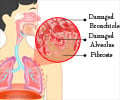General Info About Nose Bleed / Epistaxis
Bleeding from one or both nostrils is known as epistaxis or nosebleed. Bleeding usually occurs in one nostril.

Nosebleeds are common due to the location of the nose on the face, and the presence of large amount of blood vessels in the nose. Any trauma to the face can cause bleeding from the nose. The incidence of nosebleeds is higher during the colder winter months when upper respiratory infections are more frequent, and the temperature and humidity fluctuate more dramatically.
Types of epistaxis-
- Anterior epistaxis- Is seen more commonly.
- Posterior epistaxis- It is less common and requires medical attention.
Recurrent nosebleeds may be a symptom of underlying disorders such as high blood pressure or bleeding disorders.
Significant cases of nosebleeds occur with no obvious cause. The most common cause of nosebleed is drying of the nasal membranes, thereby leading to crust formation. These crustsbleed when irritated by picking or blowing the nose.
Most nosebleeds can be treated at home. However, consult a doctor if bleeding cannot be stopped or there has been heavy blood loss. A doctor may use nasal packs or cauterization when conservative measures fail.












